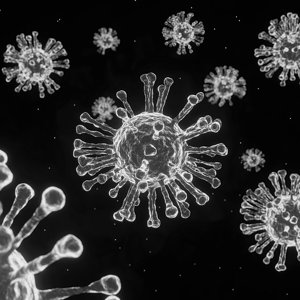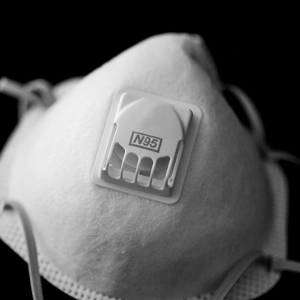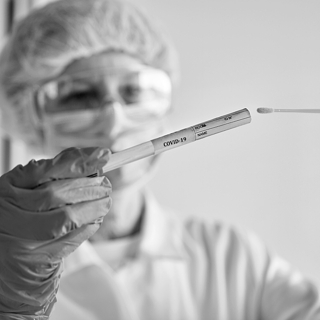Global Healthcare Resource's General Manager of Coding Quality, Viba Raghavendran (CPC) and Deputy General Manager of Coding Operations Sivashankari Thangavelu (CPC,BCHHC,RCC & CCS) share helpful rule reminders and coding information for specific medical conditions. This month, let's take a closer look at important COVID-19 coding guidelines and the common scenarios that impact sequencing.
- Coding Guidelines
- Sequencing of Codes
- Acute Respiratory Illness Due to COVID-19
- Exposure to COVID-19
- Screening For COVID-19
- Signs and Symptoms Without Definitive Diagnosis
- COVID-19 Infection in Pregnancy, Childbirth, and the Puerperium
- COVID-19 With Sepsis
- Additional Coding Scenarios
- Summary of the SARS-CoV-2 Related CPT Codes
Coding guidelines:
 When using COVID-19 diagnosis codes for dates of serviceafter April 1, 2020, use ICD 10 code U07.1 COVID-19 diagnosis codes for dates of service ordates of discharge prior to April 1, 2020, use B97.29.
When using COVID-19 diagnosis codes for dates of serviceafter April 1, 2020, use ICD 10 code U07.1 COVID-19 diagnosis codes for dates of service ordates of discharge prior to April 1, 2020, use B97.29.- Code Only Confirmed Cases as documented by the provider, documentation of a positive COVID-19 test result, or a presumptive positive COVID-19test result.
- If the provider documents "suspected," "possible," "probable," or “inconclusive” COVID-19, do not assign code U07.1. Assign a code(s) explaining the reason for encounter (such as fever) or Z20.828, Contact with and (suspected) exposure to other viral communicable disease.
Sequencing of Codes
Code U07.1 should be sequenced first, followed by the appropriate codes for associated manifestations, except in the case of obstetrics patients as indicated in Section . I.C.15.s. for COVID-19 in pregnancy, childbirth, and the puerperium.
For a COVID-19 infection that progresses to sepsis, see Section I.C.1.d. Sepsis, Severe Sepsis, and Septic Shock See Section I.C.15.s. for COVID-19 in pregnancy, childbirth, and the puerperium .
Acute respiratory illness due to COVID-19 , use the following sequencing
- Pneumonia; U07.1 and J12.89
- Acute bronchitis; U07.1, and J20.8
- Bronchitis not otherwise specified (NOS); U07.1 and J40
- Lower respiratory infection NOS; U07.1 and J22
- Acute respiratory infection NOS; U07.1 and J22
- Respiratory infection NOS; U07.1 and J98.8
- Acute respiratory distress syndrome; U07.1 and J80
Exposure to COVID-19
- For cases where there is a concern about a possible exposure to COVID-19, but this is ruled out after evaluation, assign code Z03.818, Encounter for observation for suspected exposure to other biological agents ruled out.
- For cases where there is an actual exposure to someone who is confirmed or suspected (not ruled out) to have COVID-19, and the exposed individual either tests negative or the test results are unknown, assign code Z20.828, contact with and (suspected) exposure to other viral communicable diseases. If the exposed individual tests positive for the COVID-19 virus, see guideline a).
Screening for COVID-19
- Asymptomatic individuals who are being screened for COVID-19 and have no knownexposure to the virus, and the test results are either unknown or negative. Use code Z11.59, Encounter for screening for other viral diseases
- For individuals who are being screened due to a possible or actual exposure to COVID-19, see guideline for Exposure to COVID-19.
- Asymptomatic individual is screened for COVID-19 and tests positive, assign code U07.1, COVID-19.
Signs and symptoms without definitive diagnosis of COVID-19
Patients presenting with any signs/symptoms associated with COVID-19 (such as fever, etc.) but a definitive diagnosis has not been established, assign the appropriate code(s) for each of the presenting signs and symptoms such as:
- R05, Cough
- R06.02, Shortness of breath
- R50.9, Fever, unspecified
Patient with signs/symptoms associated with COVID-19 also has an actual or suspected contact with or exposure to someone who has COVID-19; Use Z20.828 (Contact with and (suspected) exposure to other viral communicable diseases,) as an additional code.
COVID-19 infection in pregnancy, childbirth and the puerperium
During pregnancy, childbirth or the puerperium, a patient admitted (or presenting for a health care encounter) because of COVID-19, follow the below
Principal diagnosis: O98.5-, Other viral diseases complicating pregnancy, childbirth and the puerperium.
Secondary diagnosis: U07.1, and the appropriate codes for associated manifestation(s).
COVID-19 with Sepsis
- COVID-19 and sepsis both documented and present on admission: A41.89 and U07.1
- COVID-19 present on admission and sepsis develops after admission: U07.1 and A41.89
- If the documentation is not clear whether the sepsis was present on admission, the provider should be queried for clarification.
Additional Coding scenarios
for COVID 19
 During the COVID-19 pandemic, a screening code is generally not appropriate. For encounters for COVID-19 testing, including preoperative testing, code as exposure to COVID-19 (code Z20.828).
During the COVID-19 pandemic, a screening code is generally not appropriate. For encounters for COVID-19 testing, including preoperative testing, code as exposure to COVID-19 (code Z20.828).- For an encounter for COVID-19 testing being performed as part of preoperative testing, assign code Z01.812 and Z20.828 as an additional diagnosis.
- Time frame for considering the COVID-19 as history of, or current: There is no specific timeframe for when a personal history code is assigned. If the provider documents that the patient no longer has COVID-19, assign code Z86.19.
- Encounter for COVID-19 antibody testing: For an encounter for antibody testing that is not being performed to confirm a current COVID-19 infection, nor is being performed as a follow-up test after resolution of COVID-19, assign Z01.84
- When a patient who previously had COVID-19 is seen for a follow-up exam and the COVID-19 test is negative: Assign codes Z09, and Z86.19 .
- When the provider has documented COVID-19 as a definitive diagnosis before the test results are available, and the test results come back negative: Query the provider. Providers should be given the opportunity to reconsider the diagnosis based on the new information.
Summary of the SARS-CoV-2 related CPT codes
- Accepted addition of code 87635 to report infectious agent detection by nucleic acid (DNA or RNA); severe acute respiratory syndrome coronavirus 2 (SARS-CoV-2)
 (Coronavirus disease [COVID-19]), amplified probe technique. The new code was effective March 13, 2020.
(Coronavirus disease [COVID-19]), amplified probe technique. The new code was effective March 13, 2020. - Accepted revision of code 86318 to report immunoassay for infectious agent antibody(ies) and to be a parent to 86328; addition of code 86328 to report single step antibody testing for severe acute respiratory syndrome coronavirus 2; addition of child code 86769 to report multiple-step antibody testing for severe acute respiratory syndrome coronavirus 2; and revision of the Immunology guidelines. The new codes and revision were effective April 10, 2020.
- Accepted addition of PLA code 0202U to report the BioFire® Respiratory Panel 2.1 (RP2.1) test. The new code was effective May 20, 2020.
- Accepted addition of code 87426 to report infectious agent antigen detection by immunoassay technique of SARS-CoV and SARS-CoV-2. In addition, two new PLA codes (0223U and 0224U) were accepted for detection of SARS-CoV-2.
- Accepted addition of codes 86408 for reporting coronavirus 2 (SARS-CoV-2) neutralizing antibody screen and 86409 for reporting coronavirus 2 (SARS-CoV-2) neutralizing antibody titer. In addition, two new PLA codes (0225U and 0226U) were accepted for detection of SARS-CoV-2. These new codes are effective Aug. 10, 2020.
 Looking to simplify your revenue cycle? Learn more about our end-to end revenue cycle management services including medical coding, billing and more.
Looking to simplify your revenue cycle? Learn more about our end-to end revenue cycle management services including medical coding, billing and more.
.jpg%3Fwidth=750%26name=ghrfull_logo_no_shadow-(2).jpg)


